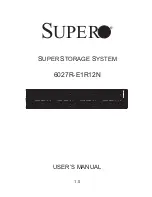
47
•
Match packets with classification rules in a class in the configuration order.
RTP priority queuing
Real-time transport protocol (RTP) priority queuing is a simple queuing technique designed to
guarantee QoS for real-time services (including voice and video services). It assigns RTP voice or
video packets to high-priority queues for preferential sending, minimizing delay and jitter and
ensuring QoS for voice or video services sensitive to delay.
Figure 21 RTP queuing
As shown in
, RTP priority queuing assigns RTP packets to a high-priority queue. An RTP
packet is a UDP packet with an even destination port number in a configurable range. RTP priority
queuing can be used in conjunction with any queuing (such as, FIFO, PQ, CQ, WFQ, and CBQ), and
it always has the highest priority.
Do not use RTP priority queuing in conjunction with CBQ. LLQ of CBQ can also guarantee real-time
service data transmission.
Congestion management technique comparison
Breaking through the single congestion management policy of FIFO for traditional IP devices, the
device provides all the congestion management techniques described above to offer powerful QoS
capabilities, meeting different QoS requirements of different applications.
Table 4 Congestion management technique comparison
Type
Number of
queues
Advantages
Disadvantages
FIFO
1
•
No need to configure,
easy to use.
•
Easy to operate, low
delay.
•
All packets are treated equally.
The available bandwidth, delay
and drop probability are
determined by the arrival order
of packets.
•
No restriction on traffic from
connectionless protocols
(protocols without any flow
control mechanism, UDP, for
example), resulting in
bandwidth loss for traffic of
connection-oriented protocols
(TCP, for example).
•
No delay guarantee for
time-sensitive real-time
applications, such as VoIP.
Packets to be sent
through this interface
Classify
RTP queue
Other queuing
mechanisms, such as
PQ, CQ and WFQ
Dequeue
preferentially
Schedule
Packets sent
Sending
queue
Interface
















































